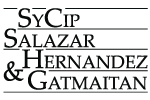In order to be compensable, is it necessary to establish a direct causal relation between the sickness and the employee's working conditions?
January, 2023 - Ronald Mark Lleno, Paul Nathan A. Beira
Mr. Simacas was employed for 15 years as a fabrication helper at a manufacturing company. He became sick and his symptoms worsened, leading to his retirement in 2010. On the same year, after spending months in the hospital, Mr. Simacas died of “Cardiopulmonary Arrest probably secondary to Metastatic Prostatic Adenocarcinoma”. His wife then filed a claim with the Social Security Commission (“SSS”) for employees’ compensation benefits under PD 626.
The SSS denied the claim, saying “that prostatic adenocarcinoma or prostate cancer was not considered an occupational disease and had no causal relationship with Irnido’s job as a fabrication helper.” The SSS further claimed that Mrs. Simacas did not submit any evidence to show a causal link between Mr. Simacas’ work and the sickness which ultimately caused his death.
The Court of Appeals reversed the decision of the SSS, ruling that it was impossible for Mrs. Simacas to have proved the aforementioned causal link because “the specific cause for prostate cancer is medically unknown” and, since PD 626 is a social legislation, “the implementing authorities must adopt a liberal attitude in deciding compensability claims.”
On appeal, the Supreme Court upheld the decision of the Court of Appeals, ruling that “for a non-communicable disease [such as prostate cancer] to be compensable [under PD 626], substantial evidence must be presented to prove that the risk of contracting the illness was aggravated by the employee’s working conditions. It suffices that the evidence presented establish a reasonable work connection [between the disease and the employee’s working conditions]. It is not necessary that a direct causal relation be proven.”
Applying the “reasonable work connection” test mentioned above, the Supreme Court cited medical journal articles on prostate cancer to show that there is a probability that Mr. Simacas’ work increased the risk of contracting prostate cancer. The Supreme Court took note of the findings in the aforementioned journal articles that exposure to chromium “revealed a small but significant increase in prostate cancer risk.”
The Supreme Court correlated this finding to Mr. Simicas’ work as a fabrication helper, citing another journal article which contains findings that “[w]orkers engaged in the manufacturing or handling stainless steel are exposed to chromium in varying degrees.”In addition, with the aid of findings of medical experts as published in the cited journal articles, the Supreme Court held that working as a fabrication helper increases one’s risk of contracting prostate cancer, thereby warranting an award of employee compensation benefits under PD 626. The Supreme Court ruled that “while Presidential Decree No. 626 has not incorporated ‘the presumption of compensability and the theory of aggravation prevalent under the Workmen’s Compensation Act[,]’ it continues to be ‘an employees’ compensation law or a social legislation which should be liberally construed in favor of labor.”
The Supreme Court further ruled that “as the official agents charged by law to implement social justice guaranteed by the Constitution, the ECC and the SSS should adopt a liberal attitude in favor of the employee in deciding claims for compensability especially where there is some basis in the facts for inferring a work connection with the illness or injury, as the case may be.”
Read the latest issue ofSyCipLaw Employment and Immigration Updatehereor via thislink.
Link to article


 Post a comment
Post a comment Print article
Print article

